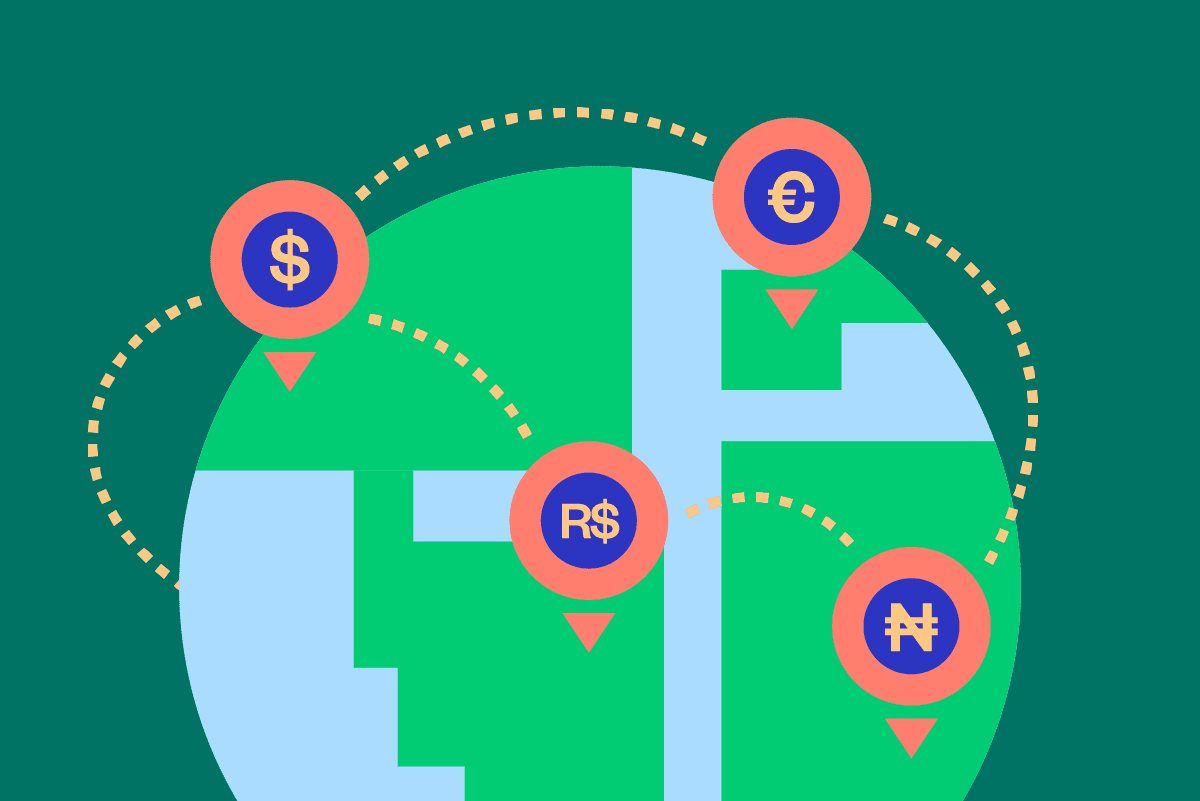Localization: the key to global e-commerce success
Payments around the world are moving faster than ever. Almost 25% of all e-commerce transactions coming from Western Europe and Scandinavia are cross-border – the value of which will double by 2022. But this boom isn’t just happening in Europe. It’s now a global phenomenon spanning a mix of devices and cultures.
What’s that mean for merchants? A field of opportunities and the ability to reach markets that maybe weren’t even on the radar five years ago.
Ride the worldwide e-commerce wave
The e-commerce market is thriving around the world. With online shopping only growing, the number of cross-border purchases will skyrocket in the next few years. We took a closer look into the stats from last year and the outlook for 2023, and the results are staggering.
Click here if you cannot see this image
The e-commerce market is thriving around the world. With online shopping only growing, the number of cross-border purchases will skyrocket in the next few years. We took a closer look into the stats from last year and the outlook for 2023, and the results are staggering.
The number of global e-commerce users is set to reach almost 4.2 billion by 2023.
So the question is: How do you get your business ready for a wider audience that wraps around the globe? The key is localization. Everyone’s tossing this word around, but actually implementing the tips and tricks behind delivering a localized experience is vital to expanding into new markets on your horizon. Let’s get down to the details and find out how you can harness a local approach and watch your conversions soar.
1. Mi casa es su casa – speak your customer’s language
The first and possibly easiest point to tackle is offering your website experience in the languages your customers speak. Do a little user research in-house or with an external agency or tool to find out who your biggest audiences are. Then, test out your conversion rates with those top languages added to your website.
2. Deliver a user experience (UX) that makes them feel at home
Another step you can take in catering to regional differences includes tweaking your UX to match local preferences. Maybe Chinese shoppers prefer a red background over blue. Or your Italian customers might want more detailed product explanation than visitors from the US.
A/B testing is a great way to find these things out with concrete data points you can take action on in your website content and design. There are plenty of tools out there that can help you set this up, even if you’re a smaller business.
In Europe, for example, the top shoppers in the market have some clear favorites. First, we looked at which European countries make the most online purchases. Then we delved into where they prefer to shop from. See the results below.
Click here if you cannot see this image
Clearly, Europeans buy a lot from Chinese sellers, which probably isn’t surprising for most of us. But the UK and Germany—and to a lesser extent, France—are big hitters too. So if you’ve got e-commerce operations from any of these three countries, you might want to localize your website in the languages of your most frequent shoppers.
Need a tip on how to start out with UX research? Take some time to browse websites of the big names from these popular e-commerce countries and see what you like and don’t, and which languages they offer. Chances are, they’ve already done plenty of user research to give customers what they’re looking for.
3. Optimize your SEO for a better conversation with each audience
Search Engine Optimization (or SEO) is also a great way to make your website easily findable on Google and other search engines. Things like an overall SEO website analysis, updating the meta descriptions of your company, and optimizing keywords on your website can really boost your ranking – especially in the languages of each of your target markets. Once you adapt your SEO marketing to each specific country audience, you’ll find a more engaged customer base.
4. Offer a familiar payments experience
What’s another way you can go local and improve your conversion? Letting them pay their way, no matter what payment method they prefer. We looked into shopper tendencies with languages and currencies and found some pretty interesting stats. 72% of shoppers spend most of their time on websites in their own language, and 45% don’t feel comfortable when they can’t pay in their own currency. Check out the numbers below.
Click here if you can’t see this image.
Working with a payments processor like Payvision who’s got a solid mix of ways to pay is a great way to boost your revenue – with 80+ local payment methods in 150+ currencies for your customers to choose from.
Getting on board with a PSP who’s got a global acquiring network doesn’t just mean you’ll be able to expand into new regions. You’ll also be able to count on an international PSP’s expertise when it comes to payment regulations in local markets. On top of that, with local payment processing you’ll enjoy better interchange fees and exchange rates.
Start small, then scale up
With localization, it’s all about starting small and finding out what works best for your business. So where can investment in localization take you? These initiatives need some time and resources, but the results are worth it. You can look forward to an improvement in customer experience, leading to higher trust in your business and giving you a wider audience and boosted market share.
Looking to offer local payment methods and currencies to give your customers what they’re looking for? Find out how Payvision can help expand your business with their global acquiring solutions






